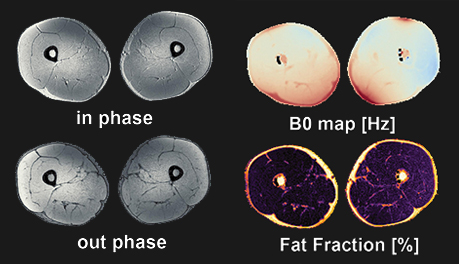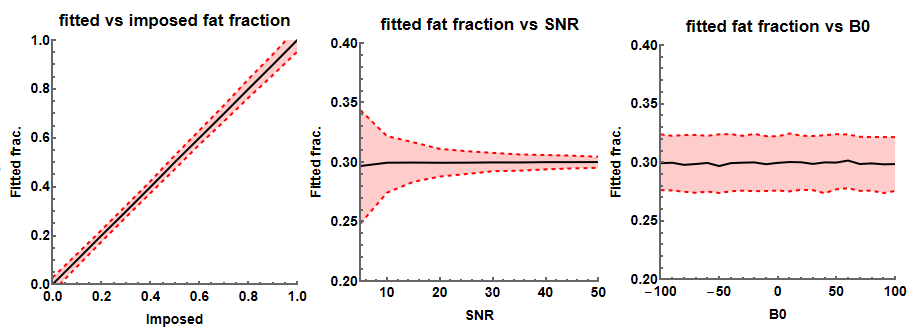DixonTools
Demonstrations.nb ››
Guide page ›› Code on Github ››
An IDEAL based Dixon reconstruction algorithm (Reeder et al. 2005; Yu et al. 2008). The method provides multi-peak fitting B0 field and T2- correction. The toolbox also provides a function for unwrapping phase data in 2D and 3D based on a best path method (Abdul-Rahman et al. 2007; Herraez et al. 2002). It also contains a function that allows simulating gradient echo Dixon data. Back››


References
- Reeder, Scott B., Angel R. Pineda, Zhifei Wen, Ann Shimakawa, Huanzhou Yu, Jean H. Brittain, Garry E. Gold, Christopher H. Beaulieu, and Norbert T. Pelc. 2005. “Iterative decomposition of water and fat with echo asymmetry and least-squares estimation (IDEAL): Application with fast spin-echo imaging.” Magnetic Resonance in Medicine 54 (3): 636–44. link››.
- Yu, Huanzhou, Ann Shimakawa, Charles A. McKenzie, Ethan Brodsky, Jean H. Brittain, and Scott B. Reeder. 2008. “Multiecho water-fat separation and simultaneous R*2 estimation with multifrequency fat spectrum modeling.” Magnetic Resonance in Medicine 60 (5): 1122–34. link››.
- Abdul-Rahman, Hussein S., Munther A. Gdeisat, David R. Burton, Michael J. Lalor, Francis Lilley, and Christopher J. Moore. 2007. “Fast and robust three-dimensional best path phase unwrapping algorithm.” Applied Optics 46 (26): 6623. link››.
- Herraez, Miguel Arevallilo, David R. Burton, Michael J. Lalor, and Munther A. Gdeisat. 2002. “Fast two-dimensional phase-unwrapping algorithm based on sorting by reliability following a noncontinuous path.” Applied Optics 41 (35): 7437. link››.